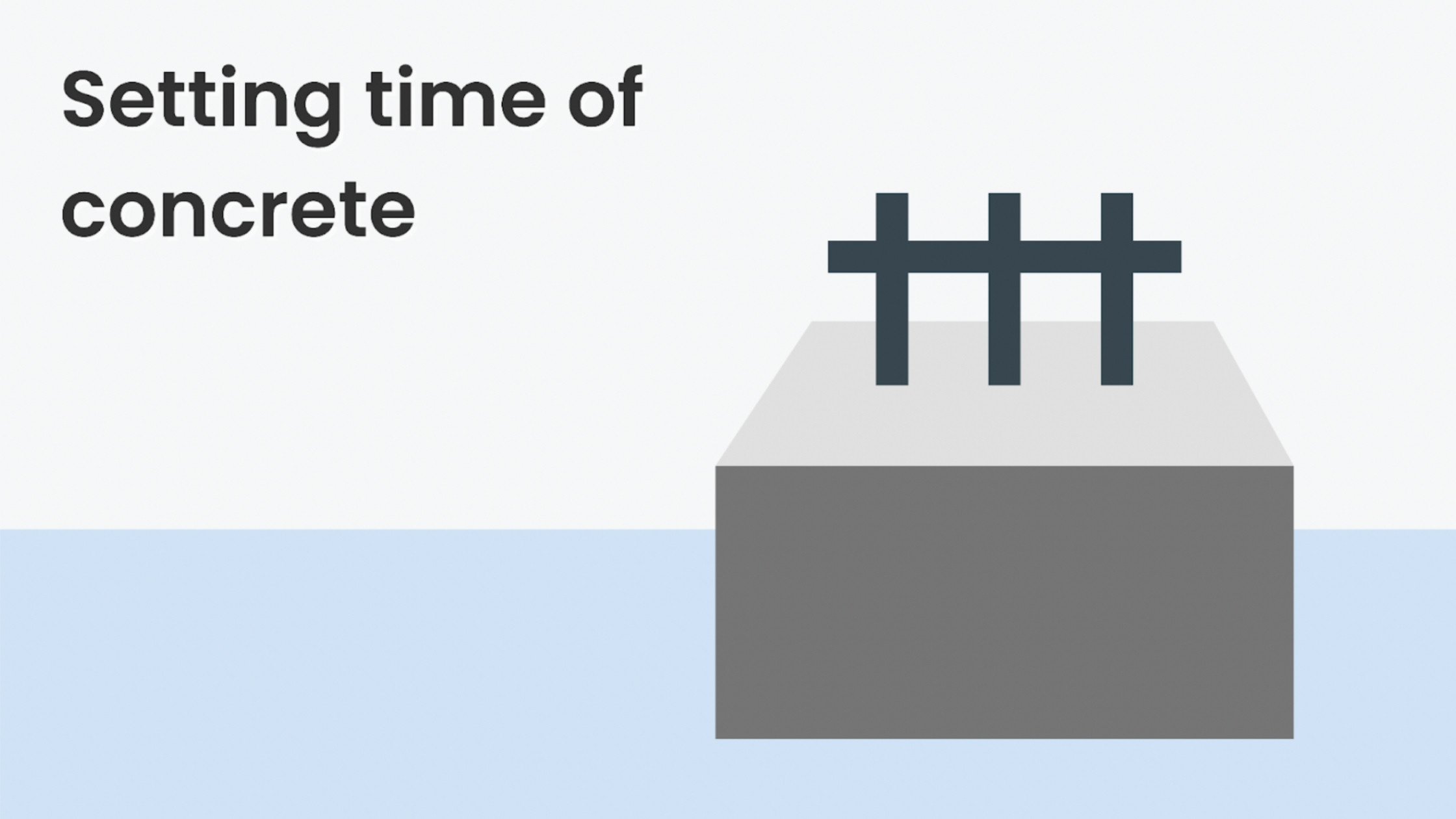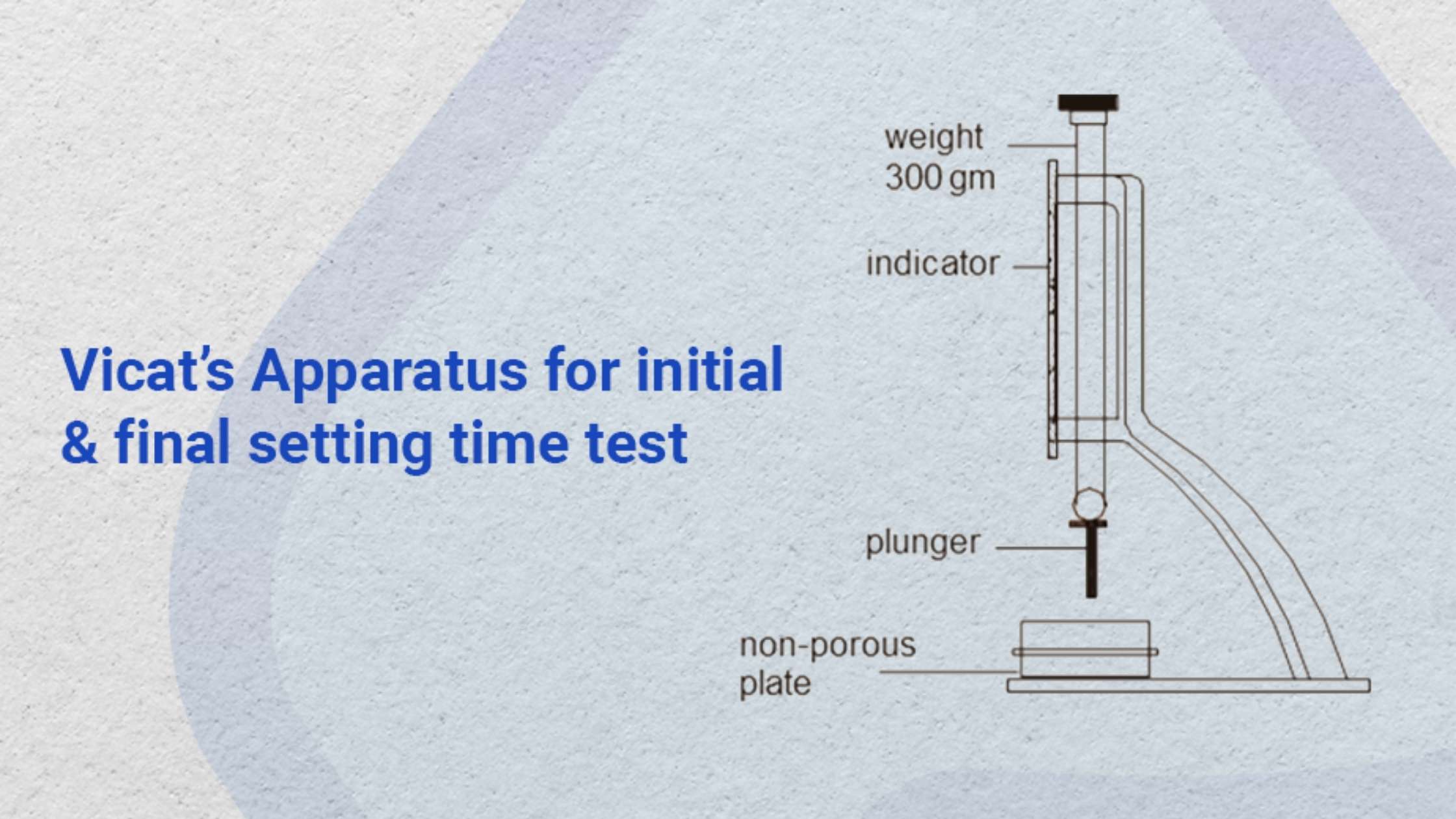What is the Setting Time of Concrete?
When concrete is poured into formworks to fabricate slabs, columns, footings and similar elemental structures, the concrete is in a fluid state. With time the concrete starts to set in and harden due to the hydration of cement. The concrete hardens in phases with the first phase being when the concrete becomes hard enough to withstand a load of workers and the second phase being when the concrete develops its design strength.

The total setting time of concrete is divided into two main categories, initial and final setting time. During the initial setting time, the concrete starts losing its plasticity and starts hardening whereas, in the final setting time, concrete becomes hard enough to allow a 1mm diameter needle to make an impression and prevent a 5mm diameter needle from making an impression.
Experimentally, after adding water to cement, the initial setting time of concrete is the time at the end of which a 1mm diameter needle from the Vicat’s Apparatus fails to penetrate the Vicat’s mould to a depth of 5mm- 7mm from the bottom of the mould.
Facts related to Setting of Concrete
Some precautions need to be taken while curing the concrete for proper strength development. Some of the important ones are:
-
Suitable care should be taken to ensure that the concrete sets neither too slowly nor too rapidly. After mixing water with the cement, the setting process starts that begins the countdown to transport, place and compact the concrete before it loses its plasticity. But sometimes, when the concrete sets in slowly, the project process may be delayed and the actual use of the proposed structure may be postponed due to inadequate strength at the requisite time.
-
Setting of concrete is not the same as the hardening of concrete. During the setting of concrete, there is an increase in mechanical strength when the concrete is strong enough to resist a needle from penetrating inside it.
-
In other words, the setting time of cement can be defined as the time required by the cement slurry to reach a specific consistency.
-
Setting of cement involves the formation of an aluminium-silicate compound when water reacts with cement.
-
The initial setting time of cement is when the cement mix starts losing its plasticity
-
The significance of initial setting time is that it should allow enough time for transporting, placing and compacting concrete.
-
Initial setting time is also required to delay the hydration process of cement.
-
During the final setting time, the concrete has already lost all its plasticity.
-
At the end of the final setting time, the concrete becomes adequately hard and takes the shape of the mould in which it is cast.
-
Determination of final setting time helps in safely removing the scaffolds.
What is the Process to Find Setting Time of Cement?
Before initiating the experimental process to determine the setting time of concrete, an apparatus is gathered to execute the experiment. This apparatus constitutes several equipment and tools such as a balance, stopwatch, Vicat’s Apparatus, measuring cylinder, glass plate, enamel tray, and a trowel.

Test Procedure
Firstly the initial preparation is done to prepare the sample for testing.
Initial Preparation
The initial preparation can be achieved in four steps that are:
-
Before starting the preparation process, the consistency test needs to be done to determine the water required for the normal consistency of the cement paste.
-
With the determined water quantity(0.85P), 400gm of cement is mixed. A neat cement paste is prepared(P being the weight of the cement).
-
Observation time ranges between 3 and 5 minutes. The stopwatch is started the instant water is added to cement and the time recorded is taken as T1.
-
The Vicat mould resting on a glass plate is filled with cement paste and observed as mentioned above. Fill the mould up to the brim and scrape off the surface to make it smooth and level with the top of the mould. This cement mould is called the test block.
Test for Initial Setting Time
The below-mentioned steps are followed to determine the initial setting time of concrete:
-
The moulded cement test block is placed on a non-porous plate under the rod where the needle is attached.
-
The needle is gently lowered into the mould and is brought into contact with the sample surface. It is then released quickly to allow the needle to penetrate the test block.
-
Initially, the needle penetrates the block completely. The 2nd step is performed repeatedly with a time interval of 2 minutes. The Vicat's needle is released quickly in each iteration until it fails to penetrate up to a depth of 5mm from the bottom. The time elapsed till this time is named T2.
Test for Final Setting Time
The below-mentioned steps are followed to determine the final setting time of concrete:
-
For calculating the final setting time, the needle in the Vicat’s Apparatus is replaced with another needle with an annular attachment.
-
The final setting time of the concrete mix is calculated when the needle makes an impression on the test block when placed and applied gently on the test block. The annular attachment fails to make an impression at this time. This time elapsed is recorded as T3.
Calculations
From the above calculated times, T1, T2 and T3, the initial and final setting time is computed as :
Initial Setting Time = T2 - T1
Final Setting Time = T3 - T1
Here,
T1 = time at which water is mixed with cement.
T2 = time at which the needle fails to penetrate the mould at a depth of 5 - 7mm from the bottom.
T3 = time at which the needle makes an impression but the annular attachment fails to do so.






